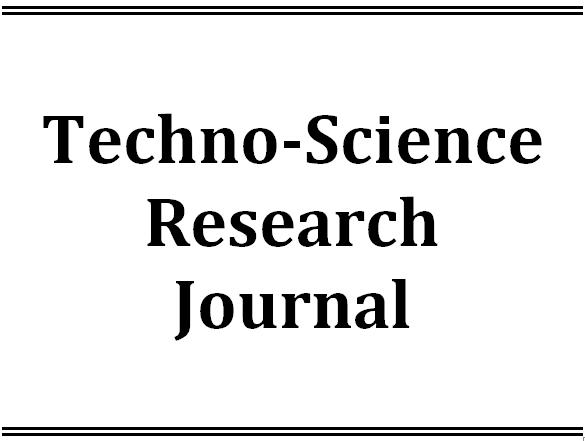Latest Issue
Empowering Education with Online Khmer Handwritten Text Recognition for Teaching and Learning Assistance
Published: August 30,2025Undergraduate Student Dropout Prediction with Class Balancing Techniques
Published: August 30,2025Status of Seawater Quality at Koh Rong Island, Sihanoukville, Cambodia
Published: August 30,2025Low-Complexity Detection of Primary Synchronization Signal for 5G New Radio Terrestrial Cellular System
Published: August 30,2025Word Spotting on Khmer Printed Documents
Published: August 30,2025Tuning Hyperparameters Learning Rate and Gamma in Gym Environment Inverted Pendulum
Published: August 30,2025Examining Passenger Loyalty in Phnom Penh Public Bus System: A Structural Equation Modelling Approach
Published: August 30,2025Prediction on Load model for future load profile of Electric Vehicle charging demand in Phnom Penh
Published: August 30,2025Economic Study on Integrating PV-DG with Grid-Tie: Case Study in Cambodia
Published: August 30,2025The Study of Cereals Price Prediction in Terms of Trade Flows for Anticipate Price Fluctuations in Cambodia by Using ARIMA Model
-
1. Department of Applied Mathematics and Statistics, Institute of Technology of Cambodia, Russian Federation Blvd., P.O. Box 86, Phnom Penh, Cambodia
Academic Editor:
Received: June 20,2023 / Revised: / Accepted: August 21,2023 / Available online: December 31,2023
The study aims to predict the cereals prices trade flows in Cambodia, considering anticipated price fluctuations by using the ARIMA model. The data on cereals price of Cambodia was deseasonalized by the seasonality index (SI) for seasonality, resulting in monthly prices from 2000 to 2021. The target variable was independently smoothed by single exponential smoothing (SES) and Holt-Winters exponential smoothing (HWES) before transforming to the Box-Cox transformation. The exponential smoothing level (α) of SES was determined at 0.15 based on the seasonal span of data, while αexport and αimport of HWES were optimized at 0.88 and 0.57, respectively. The trend (β) and seasonal (γ) pattern smoothing coefficients were found at the same value of 0.0001 for both export and import after coefficients optimization. The optimized exponential transform parameters λex/SES = 0.017, λex/HWES = 0.22, λim/SES = -0.64, and λex/SES = -0.36 could result to support the seasonality of the data, resulting in uncorrelated residual, zero mean, and constant variance to generate a newly transformed data. By using Akaike Information Criterion (AIC) on univariate data smoothing by SES and HWES, ARIMA(5,1,6)SES and ARIMA(8,1,11)HWES were implemented for the export price, while ARIMA(1,1,0)SES and ARIMA(8,1,6)HWES were also developed for the import price to predict the 20% of the testing set. As a result, the models performed accurate predictions from the starting point in 2018 to November 2019, with a mean absolute percentage error (MAPE) lower than 10% (MAPE < 10%), a good prediction in time series; however, when predicting the prices the end of 2021, the accuracy decreased to 14.07%, 12.87%, 34.63%, and 24.63% for ARIMA(5,1,6)SES, ARIMA(8,1,11)HWES, ARIMA(1,1,0)SES and ARIMA(8,1,6)HWES for long-term prediction, respectively. In summary, these models are suitable for short-term forecasting with an output of MAPE < 10%, a good interpretation score of a model, while it is observed that HWES could perform better than SES in smoothing the cereals price in Cambodia, by reducing MAPE at 30-40% and up to 10-15% lower than SES for short and long-term forecasting, respectively. The accuracy gradually decreased for long-term predictions due to the impact of the Covid-19 crisis since Covid-19 severely affected the actual agricultural products in Cambodia.

